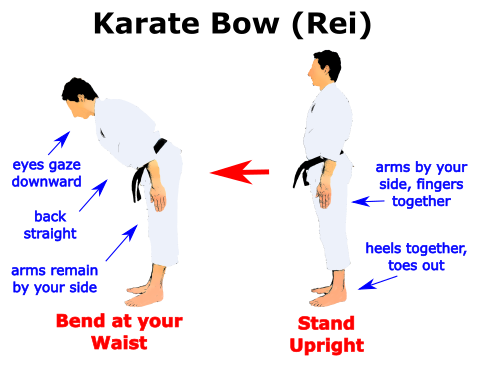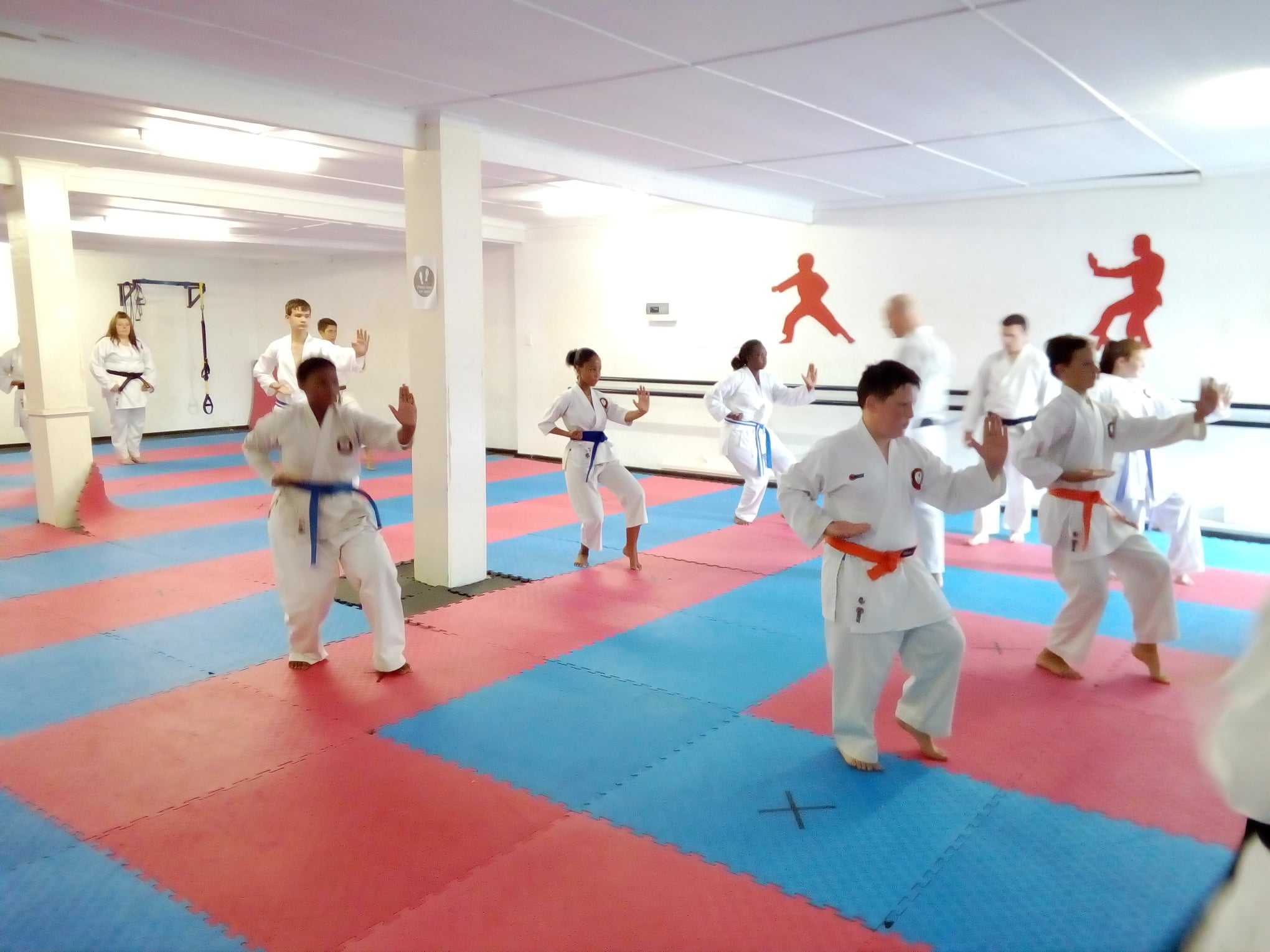Itchy, Knee, Sun? Oh, everyone screams at Choo. What is going on?
We are here to save you. This article contains a brief glossary of some of the more commonly used Japanese terminology you will come across in class.
Firstly, a Karateka is a practitioner of Karate. When we train karate, we wear a uniform called a Gi. Obi (sounds like Oh-bee) refers to your belt.
Before entering the dojo, we take our shoes off. Upon entering, one must be ready for class (For example, the belt must be put on and all jewelry removed, including watches, necklaces, rings, and earrings, prior to entering the dojo). The removal of jewelry is for safety purposes.
Any time we enter or leave the dojo, we bow as a sign of respect. Bowing is a Japanese custom for displaying respect, humility, and lack of arrogance. It is not a matter of “bowing down” to a superior; as you will notice, black belts bow to lower belts and vice versa.
What does ‘karate’ translate to?
Empty Hand. (KARA = empty) (TE = hand)
What is the Dojo?
“A place of the way”. This is the training hall, or place where we practice karate.
What is a sensei?
A sensei (pronounced like Sen-say) is a master / teacher / instructor. Sensei Liam Nel is the karate sensei of Bloemfontein Martial Arts Academy.
Sometimes a senior student (or a black belt) will assist in the classes. They are referred to as Sempai.
If you wish to say something or ask them a question, always use these titles out of respect.
Why do we bow and what do we say when we bow?
As Anko Itosu, the father of modern day karate said: “Martial Arts begins and ends with respect.”
Bowing is part of Karate Etiquette, which will be discussed in more detail later. In Japanese, ‘Rei’ means to bow.
Before each class officially begins and ends, we line up (seiretsu) beside each other according to rank (ie. belts colour and age) and we will bow.

Bowing is a sign of mutual respect and humility. A bow is a universal gesture of politeness.
‘Osu’ is a respectful greeting or acknowledgment or understanding of a command. In Japanese, ‘Hai’ means yes. When your Sensei asks you a question, respond using ‘Hai’ or ‘Osu’ (Oss) when appropriate.
For example, when asked if you are present in the class, ‘Hai’ is the appropriate response, and not ‘Osu’. If training instructions are given, your sensei will want acknowledgement that you have understood what he has just said. ‘Osu’ is the appropriate response.
The following lines will be announced by the sempai, and we say ‘Osu’ and bow after each one.
“Shomen ni rei!”:
Bow to the front of the room (this signifies bowing to the institution of karate and to the line of instructors who brought it to your instructor).
“Sensei ni rei!”:
Bow to the instructor, who will be standing in front of you.
“Sempai ni rei”:
Bow to the sempai present in the class.
“Otagai ni Rei!”:
Bow to fellow karatekas.
We will then proceed to warm up before attempting any fancy karate moves.
What is the order of belt rank in our academy?
White, Yellow, Orange, Green, Blue, Purple, Brown, High Brown, & Black.
(In our dojo, we have junior belts to pace younger karatekas for their senior black belt. In our style, a senior black belt is not given to anyone under the age of 18.).
Always respect your fellow karatekas, regardless of their rank. However, if someone is a higher belt than you, always listen to them if they are offering advice. They have been doing karate for longer than you have. Should you feel what they are saying is wrong, discuss it with your sensei after class.
Lastly, never gossip, bad mouth or snitch on your fellow karatekas, especially outside the dojo. Your fellow karatekas are like your family. If you have issues with anyone, first speak directly to your sensei about it. Any issues should be handled internally.
Why do we wear different colored belts?
Around the turn of the century, Judo master Jigoro Kano developed the belt system representing rank. The changing color of a belt symbolizes an increase of knowledge. As our belts deepen in color, our knowledge also deepens.
Counting in Japanese
During training, your sensei will count in Japanese instead of English.
When counting for class, just pronounce the first syllable (i.e., ich, rok, shich, hach), for shorter, sharper counting.
One – Ichi (Itch)
Two – Ni (Knee)
Three – San
Four – Shi (She)
Five – Go
Six – Roku (Rok)
Seven – Shichi (Seech)
Eight – Hachi (Hach)
Nine – Kyu (Koo)
Ten – Ju (Joo)
Once you reach ten, all the students will ‘Kiai’.
A ‘Kiai’ is a shout or yell (sounds like Key-eye). This is a martial shout that actually has a very important purpose which will be discussed later.
The first thing you will learn in your karate journey, is the basics. Basics in karate is referred to as Kihon. The names of the most basic attacks and blocks will be discussed in Part 2.
So for now, as we always tell the first-time karate students, “Monkey-See, Monkey-Do”.

